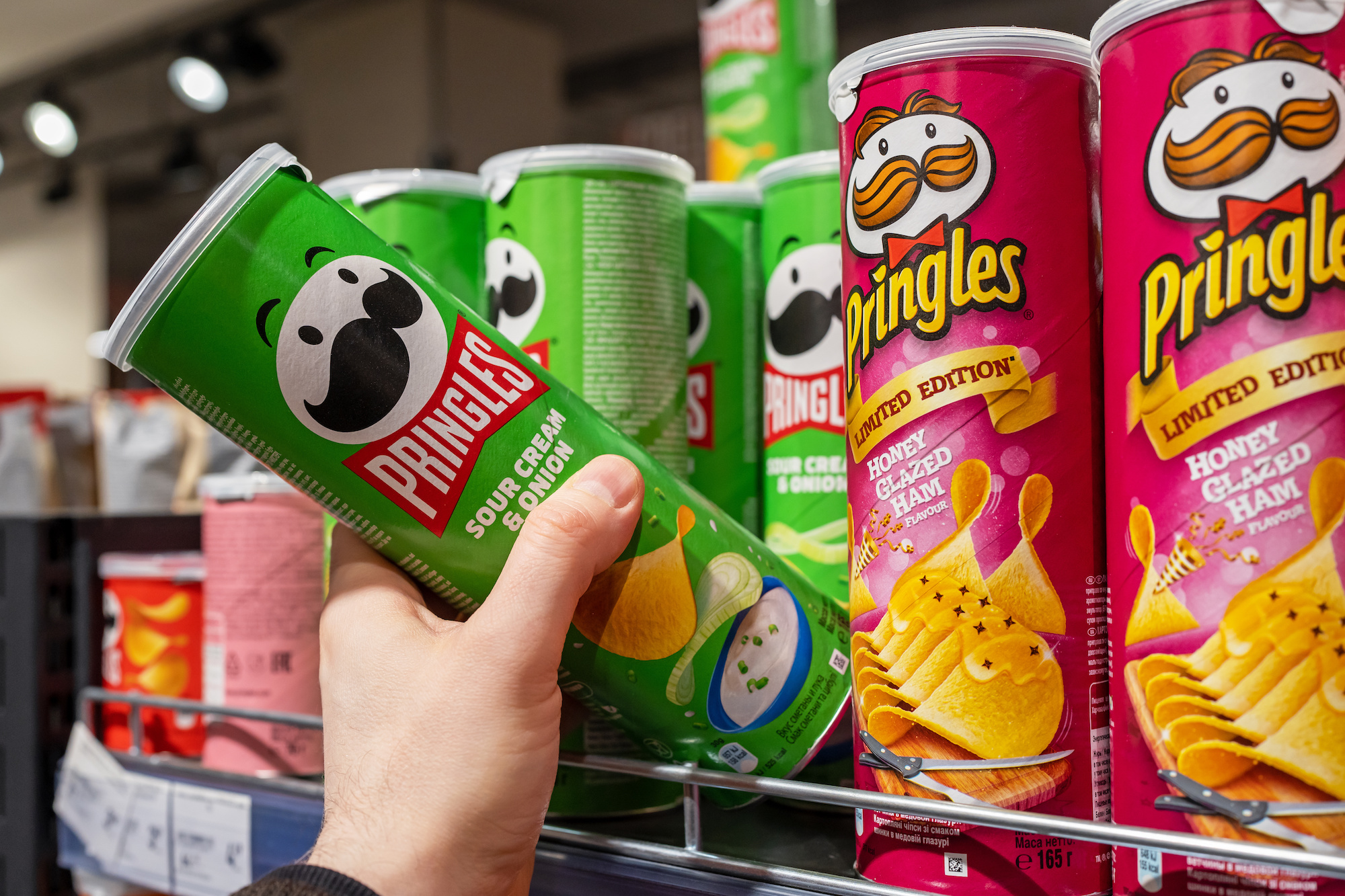
From apple pies to those iconic red cans of Pringles, there’s something comforting about nostalgic snacks. Who among us hasn’t grabbed a canister of Pringles for an afternoon snack? But although these crunchy potatoes may feel like old friends, we can’t help but wonder – what exactly are they made of? In this article, you’ll find out everything you need to know about the nutrition facts behind your favorite snack. From calories and sugar content to trans fat amounts and serving size recommendations, we’ve got it all covered!
Calorie Count
Pringles are energy-dense, with a standard single serving (40 grams) providing 210 calories, which is quite a significant amount. Keep in mind, these can add up quite a lot if you do not watch your calorie intake carefully.
High in Saturated Fats
Pringles contain a significant amount of saturated fats, amounting to around 2.5 grams. While fats are essential for health, keep in mind that consuming too much saturated fat can increase the risk of heart disease.
Contains Trans Fats
Certain flavors of Pringles contain trans fats, while others do not. Significantly, trans fat has been linked to an increased risk of heart disease. Always check the label!
Sodium Levels
Pringles are high in sodium, with around 160 milligrams in a single serving. This can contribute to high blood pressure if consumed in excess.
Carbohydrate Content
Like other potato chips, Pringles are high in carbohydrates, with a single serving containing around 16 grams. Carbohydrates can provide energy but can also lead to weight gain if not balanced with physical activity.
Protein Content
Pringles contain a small amount of protein, amounting to 1 gram in a single serving. However, it’s not a significant source compared to other protein-rich foods.

Contains Fiber
Pringles have a small amount of dietary fiber, measuring up to less than 1 gram. Considering how important dietary fiber is for digestive health, health-conscious individuals might prefer to opt for foods that contain more dietary fiber.
Vitamin Content
Pringles contain small amounts of vitamins, such as vitamin C and some B vitamins. However, they are not a significant source.
Mineral Content
Pringles have trace amounts of minerals, including calcium and iron. As with vitamins, however, they are not a significant source.
Contains Gluten
Pringles contain wheat starch, which means that they contain gluten. As such, it might not be the best choice for people with celiac disease or gluten sensitivity.
High in Added Sugars
Certain flavors of Pringles contain added sugars. This can contribute to increased calorie intake and potential health problems if consumed in excess.
Contains MSG
Some Pringles flavors contain monosodium glutamate (MSG). This is a flavor enhancer that some people may be sensitive to.
Contains Artificial Flavors
Pringles often contain artificial flavors in order to achieve their wide range of taste profiles.

Contains Preservatives
To maintain its freshness, Pringles use preservatives. While generally safe in regulated amounts, some people prefer to avoid them.
Allergen Information
Pringles can contain allergens such as wheat and milk, depending on the flavor. Remember to always check the label if you have food allergies.
GMO Content
Pringles are made from conventionally grown ingredients. This may include genetically modified organisms (GMOs).
Cholesterol Content
Pringles have a low cholesterol content, which can be beneficial for those watching their cholesterol levels.
Contains Soy
Some Pringles flavors contain soy, which is an allergen for some people.
Vegan and Vegetarian Status
Most Pringles flavors are vegetarian. However, not all are vegan due to the presence of dairy in some flavors.
Conclusion
Pringles are undoubtedly a delicious snack, but it’s essential to be aware of their nutritional profile. While they provide some nutrients, they’re also high in sodium, saturated fats, and can contain additives like artificial flavors and preservatives. Understanding the nutritional facts of the foods we consume is a vital step towards conscious eating and overall wellness. While Pringles are a tasty snack for many, it’s essential to balance their consumption with nutrient-dense foods and regular physical activity.
Was this page helpful?
Our commitment to delivering trustworthy and engaging content is at the heart of what we do. Each fact on our site is contributed by real users like you, bringing a wealth of diverse insights and information. To ensure the highest standards of accuracy and reliability, our dedicated editors meticulously review each submission. This process guarantees that the facts we share are not only fascinating but also credible. Trust in our commitment to quality and authenticity as you explore and learn with us.


